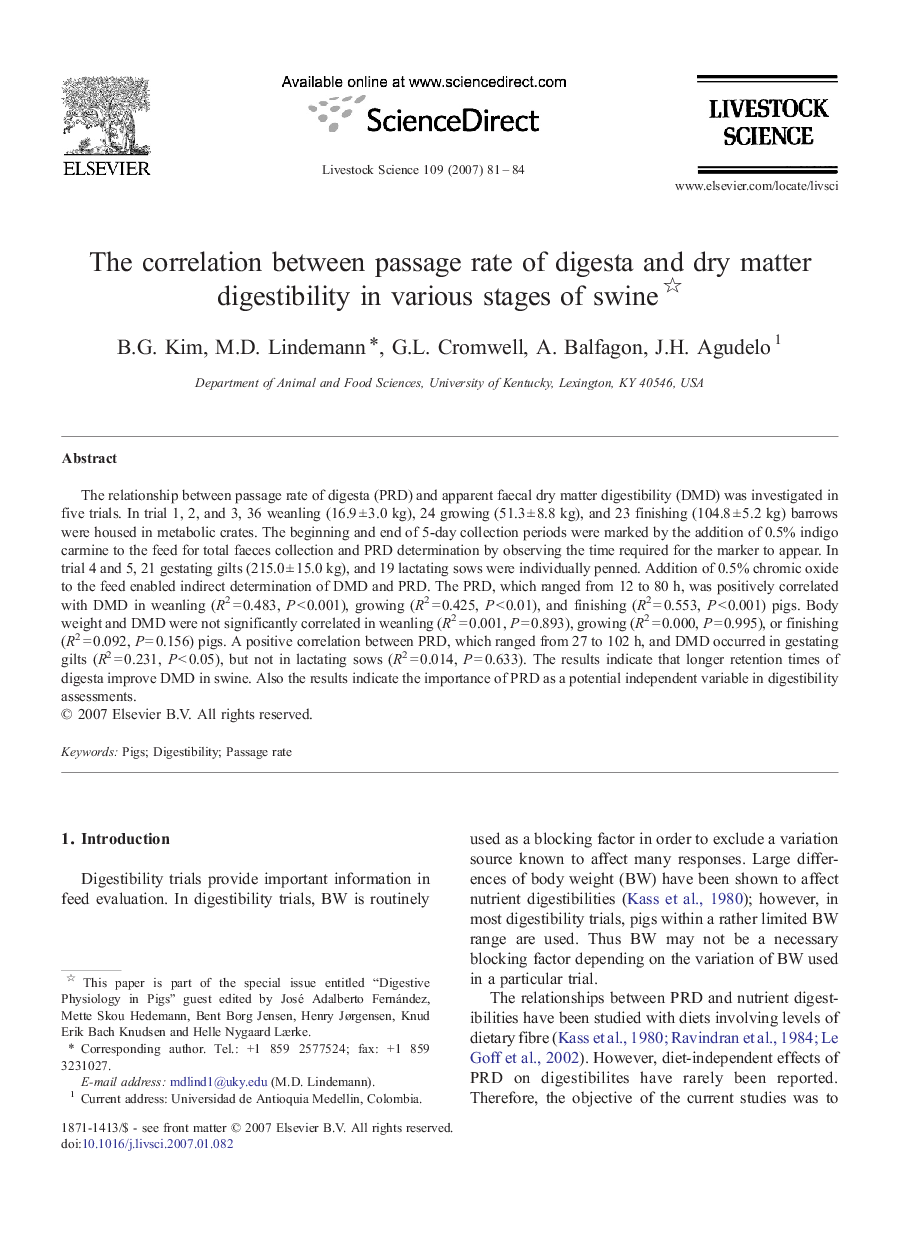| Article ID | Journal | Published Year | Pages | File Type |
|---|---|---|---|---|
| 2448872 | Livestock Science | 2007 | 4 Pages |
The relationship between passage rate of digesta (PRD) and apparent faecal dry matter digestibility (DMD) was investigated in five trials. In trial 1, 2, and 3, 36 weanling (16.9 ± 3.0 kg), 24 growing (51.3 ± 8.8 kg), and 23 finishing (104.8 ± 5.2 kg) barrows were housed in metabolic crates. The beginning and end of 5-day collection periods were marked by the addition of 0.5% indigo carmine to the feed for total faeces collection and PRD determination by observing the time required for the marker to appear. In trial 4 and 5, 21 gestating gilts (215.0 ± 15.0 kg), and 19 lactating sows were individually penned. Addition of 0.5% chromic oxide to the feed enabled indirect determination of DMD and PRD. The PRD, which ranged from 12 to 80 h, was positively correlated with DMD in weanling (R2 = 0.483, P < 0.001), growing (R2 = 0.425, P < 0.01), and finishing (R2 = 0.553, P < 0.001) pigs. Body weight and DMD were not significantly correlated in weanling (R2 = 0.001, P = 0.893), growing (R2 = 0.000, P = 0.995), or finishing (R2 = 0.092, P = 0.156) pigs. A positive correlation between PRD, which ranged from 27 to 102 h, and DMD occurred in gestating gilts (R2 = 0.231, P < 0.05), but not in lactating sows (R2 = 0.014, P = 0.633). The results indicate that longer retention times of digesta improve DMD in swine. Also the results indicate the importance of PRD as a potential independent variable in digestibility assessments.
